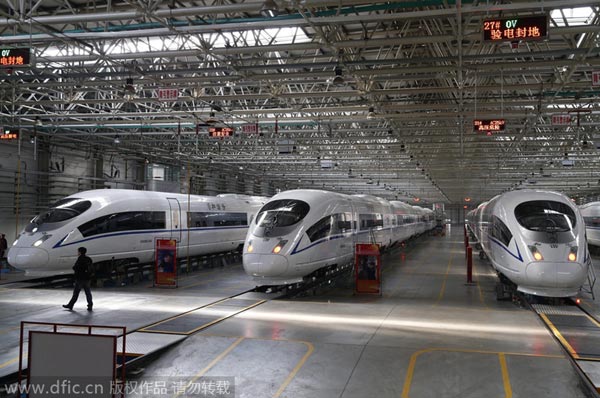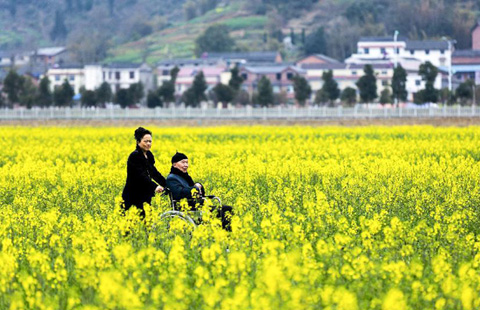China to step up construction on major transport infrastructure
Updated: 2015-02-22 13:47
(Xinhua)
|
||||||||
|
 |
|
High-speed trains are docked at a commissioning and testing facility of the Tangshan Railway Vehicle Co Ltd which is a subsidiary of the China Northern Locomotive and Rolling Stock Industry Corporation, in Tangshan city of Hebei province, China, Feb 11 2015. [Photo/IC] |
BEIJING -- China will maintain the scale and intensity of major transportation infrastructure construction in 2015 to buoy growth.
The National Development and Reform Commission (NDRC) said that more railway lines, particularly in the central and western regions, will be put into operation this year, which will stabilize economic growth and improve people's livelihoods.
The NDRC will continue to encourage social capital through preferential measures to attract investment in major transportation infrastructure in 2015.
In 2014, the NDRC approved 34 billion yuan ($5.56 billion) for transportation infrastructure, which included railways, roads, airports and waterways.
China had more than 110,000 kilometers of railways by the end of 2014, 15,800 kilometers were high speed rail (HSR), making it the HSR world leader.
Institutions

 2015 Film Independent Spirit Awards
2015 Film Independent Spirit Awards
 Beautiful sceneries of early spring flowers around China
Beautiful sceneries of early spring flowers around China
 City receives 90,000 tourists during Spring Festival
City receives 90,000 tourists during Spring Festival
 Niagara Falls: masterpiece of winter god
Niagara Falls: masterpiece of winter god 
 Tibetans rejoice at twin New Year celebration
Tibetans rejoice at twin New Year celebration
 Across America over the week (from Feb 13 to 19)
Across America over the week (from Feb 13 to 19)
 Chinese in the South remembered
Chinese in the South remembered
 Ringing in Chinese New Year on the Nasdaq
Ringing in Chinese New Year on the Nasdaq
Most Viewed
Editor's Picks

|

|

|

|

|

|
Today's Top News
Four Chinese among top 100 for Mars One project
China 'unhappy' on Modi's visit to disputed territory
Ali, Liston gloves, Shoeless Joe photo fetch $1.1M in NYC
Experts upbeat on China-US co-op
China issues snow storm warnings
Hack gave US and British spies access to billions of phones
Thousands affected by SW China earthquake
Rail modernizations civilize Spring Festival travel rush
US Weekly

|

|







